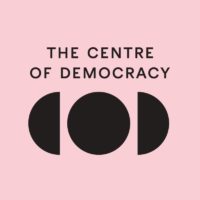Debates about whether Australia should become a republic have once again recently emerged in the public domain. It is a political topic that every so often resurfaces in public debate. As the republican question re-emerges we look at the history of this debate.
The biggest event in the republican debate was the 1999 referendum. If Australia does ever want to become a republic it would mean altering the Constitution. The only way this is possible is by asking all eligible voters whether or not they approve the proposed changes. This means a referendum.
The 1999 referendum was the culmination of public debate and formal enquiries that had been building over the course of the decade. In 1993, then Prime Minister Paul Keating established a Republican Advisory Committee to consider the constitutional and legal issues that might arise from shifting from a constitutional monarchy to a republic. The Committee was made up of nine people submitted two volumes to Keating in late 1993. The Committee also commissioned six reports from international experts regarding their countries’ shift to becoming a republic. Four of these were former Commonwealth countries.[1]
In 1996, then Prime Minister John Howard announced that his government would proceed with a Constitutional Convention to focus on the republican question. Delegates for the Convention were elected in 1997 through a voluntary postal ballot which elected 76 delegates from a total of 690 nominated candidates. The remaining 76 delegates were appointed by the Federal Government. They included parliamentary, community, indigenous and youth representatives from all the States and Territories.
The Convention took place in February 1998 with three issues as the focus: whether Australia should become a Republic; which republic model should be put to the electorate to consider against the status quo; and in what time frame and under what circumstances might any change be considered. Prime Minister John Howard stated at the start of the Convention that if support for a particular republican model was clear then the government would put that model to the people in a referendum in 1999. The result of the Convention was an in-principle resolution that Australia should become a Republic and recommended that the ‘bi-partisan appointment of the President model’, with other related constitutional changes, be put to the Australian people.[2]
Referendum campaign
Both sides of the debate have passionate campaigners. The Yes campaign was led by the Australian Republican Movement (ARM) which, at the time, was headed by Malcolm Turnbull. The No campaign was led by Australians for Constitutional Monarchy (ACM) headed by Kerry Jones. Both of these organisations still exist and continue their campaigns.[3] Those who argued for a Yes vote suggest that the hereditary monarchical system is out of date with current democratic ideals and the Australian egalitarian ethos. They believe that having an Australian as our Head of State would encourage greater social cohesion. Those who campaigned for the No vote argue to retain the status quo. They believe that the British Sovereign as our Head of State does not reduce our international independence or status.[4]
The referendum in 1999 contained two questions: a Republic question and a Preamble question. The question regarding the republic asked electors whether they approved of ‘ A proposed law: To alter the Constitution to establish the Commonwealth of Australia as a republic with the Queen and Governor-General being replaced by a President appointed by a two-thirds majority of the members of the Commonwealth Parliament.’ The second question asked whether voters approved of ‘A proposed law: To alter the Constitution to insert a preamble.’[5]
The referendum took place on 6 November 1999 and returned a No vote on both questions from all states and territories except the ACT which voted Yes for the republic question. South Australians returned an overall No vote on the republic question of 56%. Three electorates in South Australia, however, did return a Yes vote. They were Adelaide, Boothby and Sturt.[6]
Recurring republic ruminations
The republican debate again became formalised in 2003 when Senator Stott Despoja moved that Legal and Constitutional References Committee undertake an inquiry and produce a report regarding Australia becoming a republic with an Australian Head of State. She also moved that the committee engage in community participation, including in rural and regional areas.[7]
Public opinion does not always match the elite opinion of our political leaders. A poll in 2008 found that 50% of those asked supported a republic while 28% wanted to keep the status quo and 22% were undecided. In 2014 a poll showed that 42% of respondents supported a republic while 51% opposed it.[8] The republic debate arose again in 2016 when seven out of eight state premiers and chief ministers released a statement in support of becoming a republic.
It remains to be seen whether the change of monarch will result in formal engagement in the debate.
[1] These were Austria, Germany, India, Ireland, Mauritius, Trinidad and Tobago.
[2] Australian Electoral Commission, ‘1999 referendum report’, 2012, https://www.aec.gov.au/elections/referendums/1999_referendum_reports_statistics/index.htm
[3] Brenton Holmes, Politics and Public Administration Section, ‘Tracking the push for an Australian republic’, 24 April 2013, https://www.aph.gov.au/About_Parliament/Parliamentary_Departments/Parliamentary_Library/pubs/BN/2012-2013/AustralianRepublic.
[4] Dr Barry York, ‘An Australian Republic – to remain ‘crowned’ or not?’, 1 February 2016, https://www.moadoph.gov.au/blog/an-australian-republic-to-remain-crowned-or-not/.
[5] Australian Electoral Commission, ‘1999 referendum’, 24 January 2011, https://www.aec.gov.au/elections/referendums/1999_referendum_reports_statistics/1999.htm.
[6] Australian Electoral Commission, ‘1999 Referendum Report and Statistics’, 19 January 2011, 1999 Referendum Report and Statistics – Australian Electoral Commission (aec.gov.au).
[7] Holmes, Tracking the push for an Australian republic’,
[8] York, ‘An Australian Republic’.





